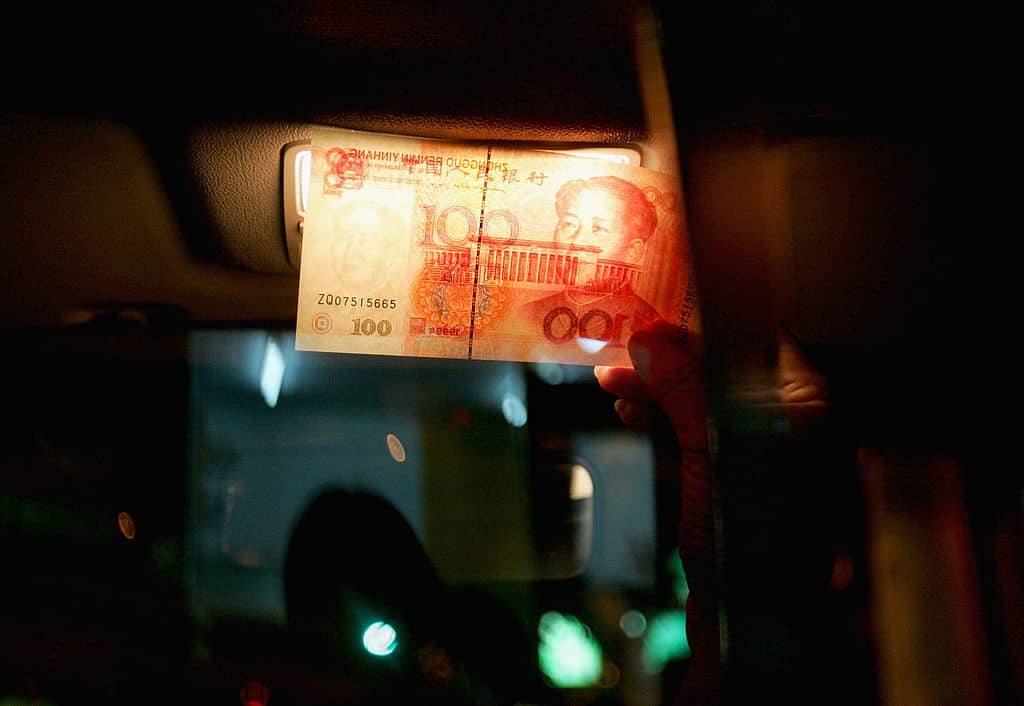My team at BitMint was awarded first prize in an international financial innovation competition more than 10 years ago, our product announced as “the only candidate qualifying as a universal digital representation of worldwide currencies.” Back in October 2011, we were ahead of time.

In an interview by a Chinese TV channel two years later, I predicted that the yuan would be digitized, enabling citizens to store digital money in their mobile phones — analogous to how we carry paper cash in our wallets — for executing online and offline transactions. Under the radar, then-governor of the People’s Bank of China Zhou Xiaochuan had made a strategic decision to explore this very direction. Since 2014, the PBOC has executed a very professional and responsible exploration process, not discarding any possible technology or financial model that was developed elsewhere. We have been privileged to be invited to contribute to this brainstorming process, as well as to lead real-world retail CBDC trials for China since 2018.
Expectations are high as the Winter Olympic Games in Beijing near, when a limited version of the digital yuan will be showcased to the world with promised 24/7 support available in multiple languages for foreign visitors. As of Dec. 31, 2021, there have been more than 8 million e-CNY pilot scenarios, and a total of 261 million personal wallets have been opened with a transaction amount of 87.6 billion yuan (US$13.6 billion).
The elephant in the room: Quantum computers
The Chinese did not need the World Economic Forum to tell it that “quantum computing will ultimately impact all financial services as it compromises major data encryption methodologies and cryptographic primitives used for protecting access, confidentiality and integrity of data stored and transmitted. CBDC is no exception.”
Unfortunately, most of the 15 retail CBDC pilots announced so far by smaller economies use architectures that do not deal properly with this threat, by design. Not only that: the architectures that they have adopted are limited in functionality and may jeopardize users’ privacy beyond the required amount for AML and prevention of illegal activities.
In that respect BitMint is speaking the same language with the Chinese. Unlike some central banks that claim to be “technology agnostic,” the Chinese agree that a quantum-cryptanalytic-resistant architecture for CBDC is not “overdoing it,” especially because it offers all the versatility and power of crypto-based digital currencies, but without the unacceptable risk of currency collapse.
Payment continuity
The financial world is anxious to watch the potential use of the digital yuan in an international setting, especially since learning of hurdles faced by CBDC systems in other countries. Thailand announced in late December it would delay the launch of its retail CBDC, presenting an opportunity for the Bank of Thailand to reconsider the risks of not adopting a quantum-cryptanalytic-resistant architecture as a design choice. Central banks must take into account potential flaws from Day One, rather than relying on add-on complexity layers. Quantum computers will break those classic cryptographic algorithms.
As of this writing, the Eastern Caribbean Central Bank Currency DCash, used by seven Caribbean nations, has been down since Jan. 14, or more than two weeks. The leaders of the Central Bank of Nigeria must be quite nervous, since their CBDC, e-Naira, was built on a similar platform.
In this case, the DCash service break has apparently been caused by technical issues. But what if a major economy’s CBDC is attacked by bad actors that are smarter than the designers of the system? Or by quantum computing power that can compromise any cryptography that most known crypto-based CBDCs rely on? Payment continuity is indispensable for a national digital currency.
Achieving sustained offline payments
Meituan, one of the largest e-commerce platforms in China, recently announced it has opened a digital yuan payment channel for all offline consumption scenarios. Spring Airlines announced it would accept offline payments aboard its flights. Currency-technology providers and other vendors presented at the Singapore CBDC challenge a secure element/card for so-called offline payment. Even Nigeria is reported to be seeking to deploy an offline use for e-Naira that would allow users without a strong internet connection or a smartphone to use the CBDC.
Do these solutions offer real offline payment? If you define offline payment as the ability for conducting consecutive payments that are not linked to any external system, no Internet, no mobile phone, then the answer is no. Most smartcards announced as secure seem to be vulnerable to superior tampering and counterfeit wallets, and in most cases cannot provide finality of settlements in the offline mode and therefore are limited in number and volume of transactions. What is needed is a hard wallet that mitigates all the above, provides payment continuity anytime, anywhere for all, with finality of settlements in offline mode. Such a hard wallet is quantum-safe with scalable resistance to tampering; defends against counterfeiting and against double spending, while creating a trusted offline payment regimen for as long as the internet is compromised. This is the critical third leg for payment trust: We trust the money (cash); We trust the payer (credit card, peers); and We trust the wallet, with or without the Internet.
What else is missing in the e-CNY?
Achieving widespread consumer and merchant acceptance requires great superiority in convenience, speed, efficiency, security, user experience and features, compared to cash and mobile payments apps such as WeChatPay and Alipay. And that this CBDC will cater to all consumers’ changing needs, including the under-banked, unbanked, non-technology savvy, and those who don’t possess smartphones.
A proper design would enable splittable coins, payable at any desired denomination including micro and nano payments, and continuous payments per service, with payment finality. The design must also ensure the transactions would be conducted autonomously by the user’s mobile or IoT device, not dependent on any ledger or another intermediator, applicable to money in motion and money at rest.
Traditional red envelopes and crypto gift cards are missing such a unique “split and spread” phone-to-phone mechanism. Combined with tethering capabilities to intended purpose, digital yuan will offer maximum flexibility to fashion rewards as well as inducements to customers and prospects, with top security, transferability, online and off-line, and will spur much greater interest by consumers and merchants.
Tethered money, which is elaborated in a book by this title and written by my BitMint co-founder Gideon Samid, can be used for phone-pushed subsistence payments directly to the banked and unbanked for boosting local and national economies and providing an economic safety net for every citizen. It also meets the challenges of social distancing, prevents hoarding, eliminates shortages of necessities and alleviates liquidity crunches during lockdowns.
Creating novel payment options requires serving the micro service economy. The e-CNY as well as any CBDC infrastructure should provide: real-time payments with or without internet, for large and small transactions. And pay-as-you-go that replaces the unfair subscription regimen currently where light users overpay and heavy users underpay.
What does the future look like?
Crypto 1.0-based currencies and assets might be obsolete sooner than later, unless they put citizens in charge of their privacy, and are resilient by design against smarter bad actors and quantum computing attacks. Crypto 2.0 will restore the bilateral payment experience. It has the same shape as a cash payment: strictly bilateral. Privacy will reign, benefitting the law-abiding citizens. The high-tech sophistication in this cyber cash will deny criminals from abusing this precious privacy. The first crypto 2.0 protocol, BitMint’s LeVeL, is adequate to Web3, among other proposals, and prepares today for the looming battle royale between quantum and crypto. This is the battle to preserve the achievement of digital currency: frictionless transactions, ease of storage, and the tethering of money to its intended purpose all while safeguarding privacy and re-establishing the social bond between two strangers participating in a monetary exchange.
Eventually, the major economies will not dare take the risks involved in adopting crypto technology to produce state digital currencies, but will build robust, flexible, sustainable quantum randomness-based digital currencies.
Both central banks and private or public trusted issuers of digital tokens will deploy crypto 2.0 platforms to issue centralized-minted, decentralized-distributed, stable, unbreachable anonymity coins, designed to discriminate between ordinary law-abiding monetary privacy and criminal and abusive exploitation thereto. Does that sound utopian? Well, the technologies to enable this exist. Central banks must make courageous, responsible decisions to bring this idea to life. Let’s make conscious choices and use digital money for social justice and equitable global prosperity.





